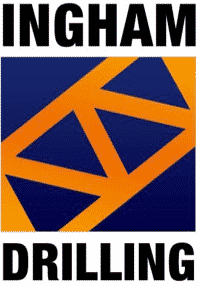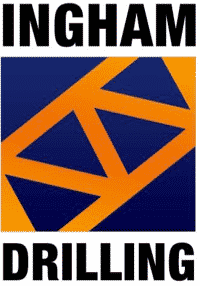A Drilling Contractor’s Guide To Borehole Drilling
A borehole is a vertical hole that’s drilled into the ground for mineral extraction, to install monitoring equipment, and for other purposes. For boreholes to be effective, you need to source a suitable foundation and consider other factors – such as materials and monitoring systems.
Here is a complete guide to borehole drilling for those interested in the installation process.

Identify Where On Your Property To Create A Bore Hole
It’s important that you situate your boreholes in a location that allows you to obtain necessary information at a minimum cost. Drilling contractors usually carry out test drilling to determine an appropriate location – especially on large commercial properties.
There are practical decisions to be made when choosing where to place a borehole, yet they can typically be placed anywhere on your property. Most contractors choose to situate boreholes close to the suggested foundation for greater measurement and value. If you’re struggling to identify where to place boreholes, consider uniformly spaced grid boreholes.
Some questions to consider before creating a borehole include:
- Where can the above-ground pumping structure be accommodated?
- Where do you require the water?
- Is there anything nearby that could contaminate the borehole?
- Where is the closest power source?
Water Bore Sizes And Materials
Water boreholes are constructed using a range of materials and a motorised drilling rig process. The materials used depend on the requirements of the borehole and the surrounding geological conditions. Stainless steel is a good material to use as it’s durable – allowing it to withstand high water pressure – and has a long lifespan.
The size of a borehole varies according to whether it’s for commercial or residential use. For example, homeowners usually opt for boreholes that are 5-inches or 6-inches. This generates approximately 125-177ml of water.
However, if you own a commercial site, you may consider a borehole that’s approximately 8 to 10 inches that services between 200-300ml of water.
When it comes to borehole installations, downsizing on machinery ensures that you can conduct smaller operations. This means you can carry out your project with minimal disruption to the landscape.
Bore hole monitoring
Borehole monitoring can be minimal or extensive. In all cases, monitoring is crucial to see how a water table responds to seasonal changes throughout the year. It also allows you to determine:
- The drawdown effects of water extraction
- How do weather conditions affect the water reservoir
- The recovery time of the reservoir
Simple monitoring involves using a dip tape to take water measurements and see how far below the surface water supply begins. However, this monitoring system can only be used for single borehole sites. The most common form of borehole monitoring includes the use of submersible pressure transmitters or level probes.
To monitor multiple boreholes at once, automated monitoring equipment is essential. This ensures data is collected routinely across multiple locations and prevents human error. The results of borehole monitoring can be used to conduct waste removal, decommissioning work, or contaminated water treatments where appropriate.
Do I Need To Hire A Licensed Driller For My Bore?
It’s extremely important that you hire a licensed driller for borehole installation and maintenance. This is especially the case if you’re unsure of how to plan a borehole, as you are liable to pay any damage costs should something go wrong. All states in Australia require water drilling contractors to hold appropriate licensure so that commercial and residential property owners are guaranteed high-quality work.
For licensed drillers, get in touch with Ingham Drilling on 07 4222 6666 or email info@inghamdrilling.com.au.

